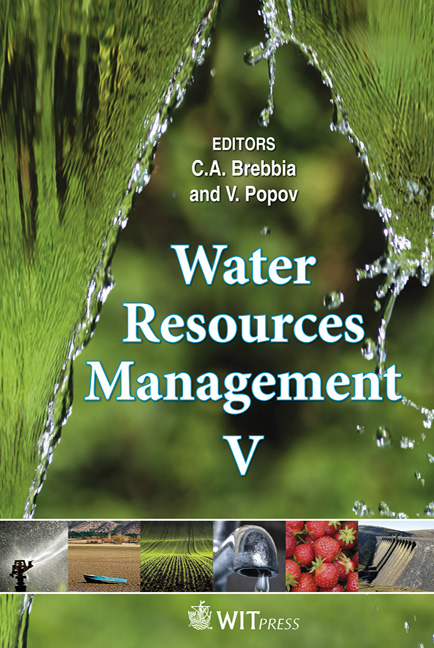Efficiency Comparison Of Advanced Photochemical Oxidation Technologies In Phenol Removal From Aqueous Solution In Iran
Price
Free (open access)
Transaction
Volume
125
Pages
8
Page Range
229 - 236
Published
2009
Size
521 kb
Paper DOI
10.2495/WRM090211
Copyright
WIT Press
Author(s)
A. Torabian1, N. Jamshidi2, A. Azimi1, G. N. Bidhendi1 & A. Ghadimkhani3
Abstract
In this study, advanced oxidation processes (UV, UV/H2O2, UV/H2O2/Fe(II) and UV/H2O2/Fe(III)) were investigated in lab-scale experiments for degradation of phenol or benzene hydroxy in aqueous solution. The study showed that the photo-Fenton process, (a mixture of hydrogen peroxide and ferrous or ferric ion), was the most effective treatment process under acidic conditions and produced a higher rate of degradation of phenol at a very short radiation time. It accelerated the oxidation rate by 4-5 times the rate for the UV/H2O2 process. The reaction was influenced by the pH, the input concentration of H2O2 and the amount of the iron catalyst and the type of iron salt. The experimental results showed that the optimum conditions were obtained at a pH value of 3, with 6 mmol/1 H2O2, and 0.5 mmol/1 Fe(II) for the UV/H2O2/Fe(II) system and 6 mmol/l H2O2 and, 0.4 mmol/1 Fe(III) for the UV/H2O2/Fe(III) system. As for the UV processes, UV/H2O2/Fe(III) showed the highest degradation rate. Keywords: phenol, UV radiation, hydrogen peroxide (H2O2), advanced oxidation.
Keywords
phenol, UV radiation, hydrogen peroxide (H2O2), advanced oxidation





